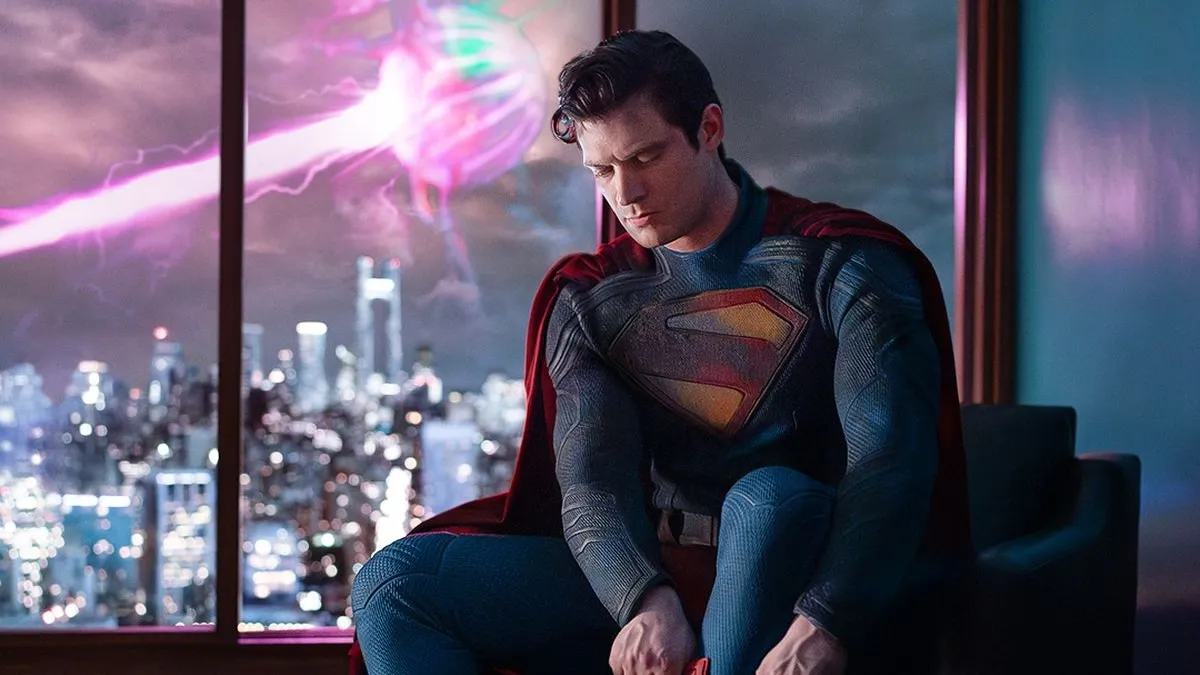Fox Searchlight’s I Origins came out last weekend. I’ve already posted my review and interviews with the cast of the film, but I also had the chance to speak with writer/director Mike Cahill about his process and inspiration.
The film’s star, Michael Pitt, already told us that he took a lot of inspiration from Cahill’s scientist brother Hugh, but Cahill expanded a bit on exactly how Hugh influenced the production.
Cahill: I have always admired scientists. I admire my brothers. My brother Hugh invited us to the lab to see his experiments and to also introduce Michael and Brit to the other scientists there. A scientist named Max and a scientist named Phil at Johns Hopkins. And these guys were so cool and so generous with their time and so, you know you could see the influence and the effect it had on Brit and Michael and how wonderful they are as actors because they would just… I remember Michael saying to Phil “Just do what you do like extract DNA or pipetting and I’m just going to watch.”
Because there’s a method to it and a rhythm to it and a mannerism to it and they would just soak in all this and I thought “You know what, there’s not many films that depict scientists as they are.” I think it’s my duty or my job and my pleasure to really capture the spirit of being a PhD student pursuing discovery and get that right. Like I wanna get it right and so this movie is our attempt to do that.
Since so much of I Origins is centered around human eyes, one of the other journalists in the room asked Cahill if they’re something he notices when he meets people.
Cahill: I think we always do, I mean…it’s weird that children know to look at the eyes and not the mouth or the shoulder. We look and we know that the sense of self or the source of identity is somewhere here. Intuitively we know that. Throughout culture, the history of civilization, the eye has held this sort of mystical, powerful source of story – that old cliché that the eyes are the windows to the soul has survived for centuries and centuries and centuries.
I was once on an island in Croatia called Bryony with my wife and there are these beautiful ancient roman ruins on the beach. And by the water there are these rocks covered in dinosaur footprints. And so it’s a really cool sight because there are tourists taking pictures of the ruins and of the dinosaur footprints. And it occurs to me that that civilization had risen and fallen and had never discovered dinosaurs. Yet their children played in the puddles of the dinosaur footprints.
Their whole existence came and went and this other thing that was right in front of them. I want to know, what are our dinosaur footprints? What’s right in front of our faces that we just don’t recognize their significance? And that’s what I thought of the eyes.
Eyes do play a key role in the film, particular the character Sofi’s eyes. It turns out there was a specific inspiration for those eyes. The famous June 1985 cover of National Geographic featuring a young Afghan woman with striking eyes.
Cahill: Steve McCurry took that famous photograph from the June [1985] issue and he snapped that photo in a refugee camp and met the girl for like 30 seconds and she was off and he didn’t know her name and he didn’t know anything about her story. And yet every day he would get letters like who is this girl and it became a super iconic famous photograph. I think it was 17 years later he mounted a mission to try and find her. The girl’s face changed but the only thing that didn’t change was her eyes.
Our eyes form in the womb and they stay the same our entire lives until our death. Our irises are unchanging. So they went to the border of Afghanistan and Pakistan and brought an iris biometric scientist to help aid in the quest to find her and they eventually found her and it was very inspirational for me because as an artist, how can I change this? What if you went to find someone through their eyes and they were completely different? What if they had died and someone else had their eyes? Would there be a connection? And today with technology, prior to now we could never have done such a search but there’s a database with hundreds of millions of eyes on it.
The eyes the film are based around belong first to the character of Sofi, but they reappear in the character of Salomina, the young Indian girl Dr. Gray seeks to find. That character was played by newcomer Kashish, and Cahill told us how he found her, and how different she was than her character.
Cahill: Well, we found her through this casting director Dilip Shankar, and he cast Life of Pi and he’s a really beautiful human being, very spiritual human being, very full of light as a human and he saw many, many young aspiring actor children for the part. And he presented me–I was in NY and he was in Delhi and he would send me video audition tapes online.
And the thing about the challenge I gave to him and I don’t know if he’s ever had this challenge was to cast someone who “felt” like Sofi. Not a look alike, but a feel alike. You know when you meet a person and you’re like “Oh you remind me of someone I know. You don’t look like them but you remind me of them.” It’s something that’s very difficult to articulate but it’s a sense or a feeling that we’ve had. I was like “Dilip, can you cast – how can you do that?”
So along comes Kashish who was at the Salaam Baalak school it’s an NGO based in Delhi and she’s an orphan in real life but she’s well taken care of at this place. We made a big donation to the place in her honor. But along comes her and she gets in front of the camera and the camera disappears. She has no self-consciousness. She becomes the character. The character is nothing like Kashish. When you push cut she’s back to herself. And then it’s also Michael. Like Michael…he just intuitively had such a great interaction with her and they forge a trust and spent a few days just hanging out spending time together and she’s just naturally talented.
She’s a special one. We were just in touch with her and she’s very happy. It was sad but it was so sweet. She would come to the set in this very pink beautiful dress and sunglasses and you’d have to dirty her up and I was like this just feels weird. She’s so special.
As I mentioned in my review, I felt like if another director was trying to tell the same story they would have focused on the larger stories of what iris patterns repeating means on the world, but Cahill very much focused in on how it impacts one character and his relationships. I asked him how much of a choice it was to approach his story that way.
Cahill: I want to tell a love story. The movie is a love story and it looks at two different types of love. The type that Ian has with Sofi and the kind that Ian has with Karen. And they’re very, very different in the fabric of those romances. One is an exploding firework and the other is sort of like a mountain. And they’re both valid and I think love is a universal thing we have all experienced it. Heartbreak and romance and so I wanted to capture this epic sci-fi concept but keep it in a very relatable story. But the sequel will follow the other scientists probably.
He laughed after that, but seriously, Mike. I’d watch that sequel.
Because the film focuses pretty heavily on the intersection of faith and science one of the other journalists in the room asked everyone we spoke to where they stood on the issue. The actors all gave a pretty diplomatic “somewhere in the middle” kind of answer, but Cahill expanded on it a bit more.
Cahill: The scene that kind of is the most enlightening to me about that debate is the scene about the worms. When Sofi comes into the lab and she says how many senses do these worms have and he says two. Touch and smell. Which is true. And she says and you give them sight, which is also true. Scientists can do that. You can modify worms to have sight. And so she uses what he’s doing in the lab the logic of that she uses the logic behind that to say who’s to say the limit is 5 senses?
Who’s to say – ergo if we have 5 senses and modify this one have two or three. Who’s to say we can’t have 6? That’s where the word metaphysics comes into play. Metaphysics is beyond physical. And metaphysics is the realm of the spiritual. Science and spirituality can be nice bedfellows if they wanted to be because of that fact. Anything beyond our tangible touchable seems to be another realm and that’s very, very scientifically explainable.
There’s a great book called flatland in which a two dimensional line falls in love with a three dimensional sphere. And I loved this book when I was a kid because it totally erupted in my mind the sense of dimensions and how that works. Like how would a 4th dimension look like or feel? There are things beyond our imagination because our imagination is limited to our sensorial perception. And they even say there’s certain cows that have a sense which we don’t have. Like a magnetic sense. Cows can detect the poles just from their brains. That’s a sense that we just don’t have. But that’s a sense in and of itself.
We spoke a little more about animals sensing the Earth’s magnetic field, and he’s right. Animals have been shown to be able to sense that field. I told Cahill about a story we ran earlier this year about how dogs align themselves with the magnetic field when they poop. He seemed pretty into it. Maybe we could collaborate on a movie about weird ways animals poop.
(via I Origins, image via Fox Searchlight)
- Here’s what the cast had to say about the film
- You can read my full review of I Origins here
- I spoke about it on The Geekosystem Podcast
Are you following The Mary Sue on Twitter, Facebook, Tumblr, Instagram, & Google +?








Published: Jul 21, 2014 06:30 pm